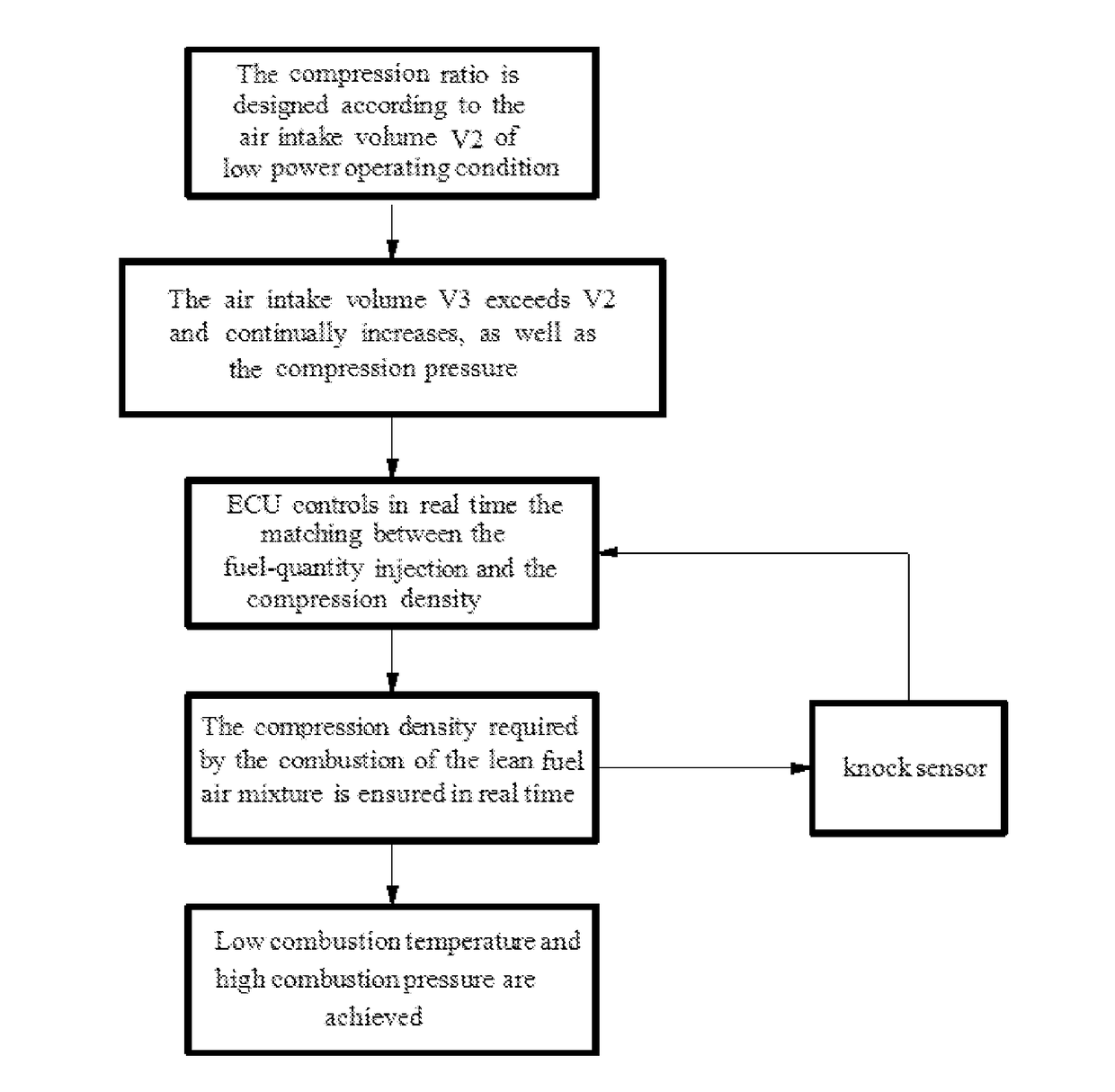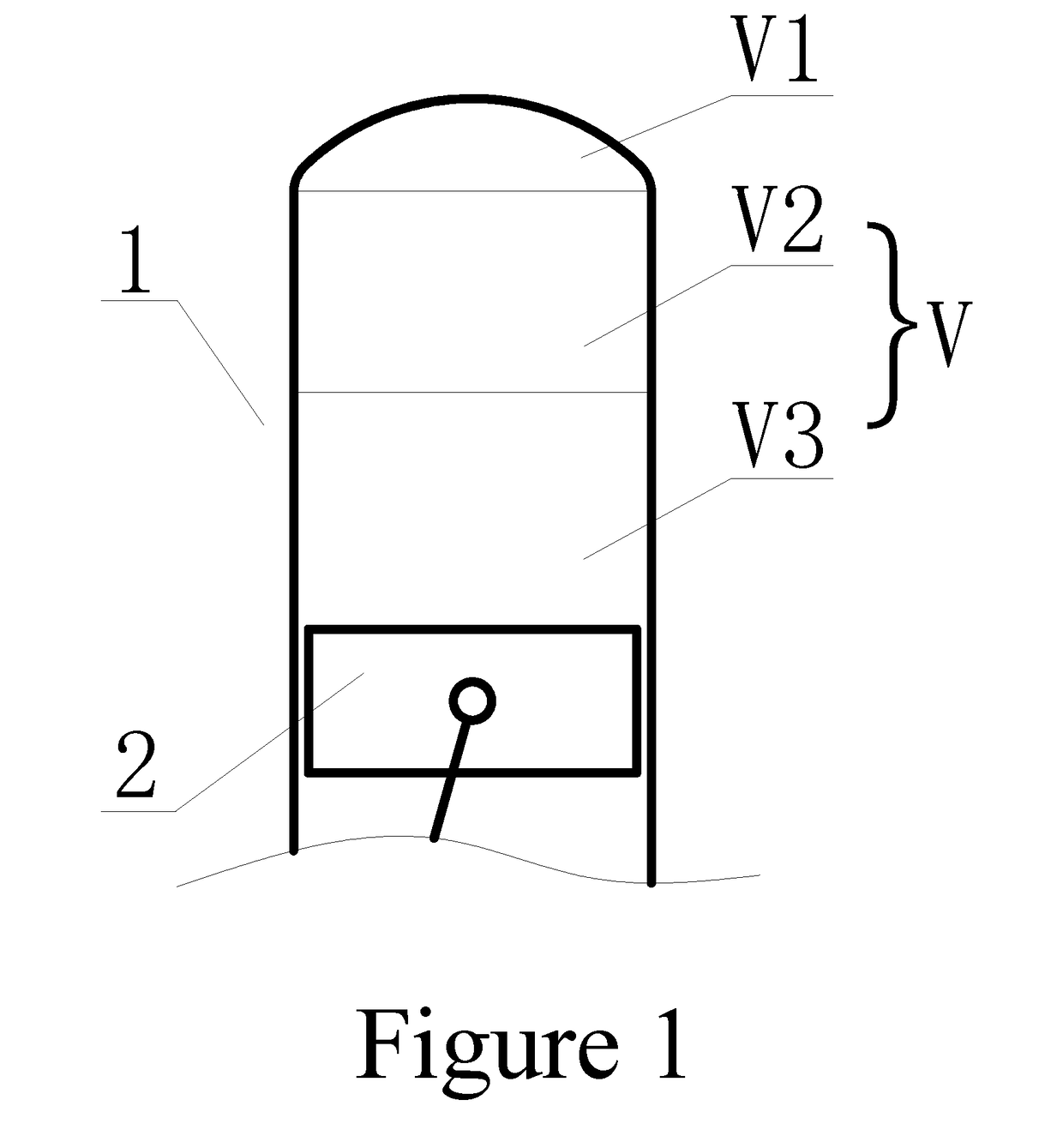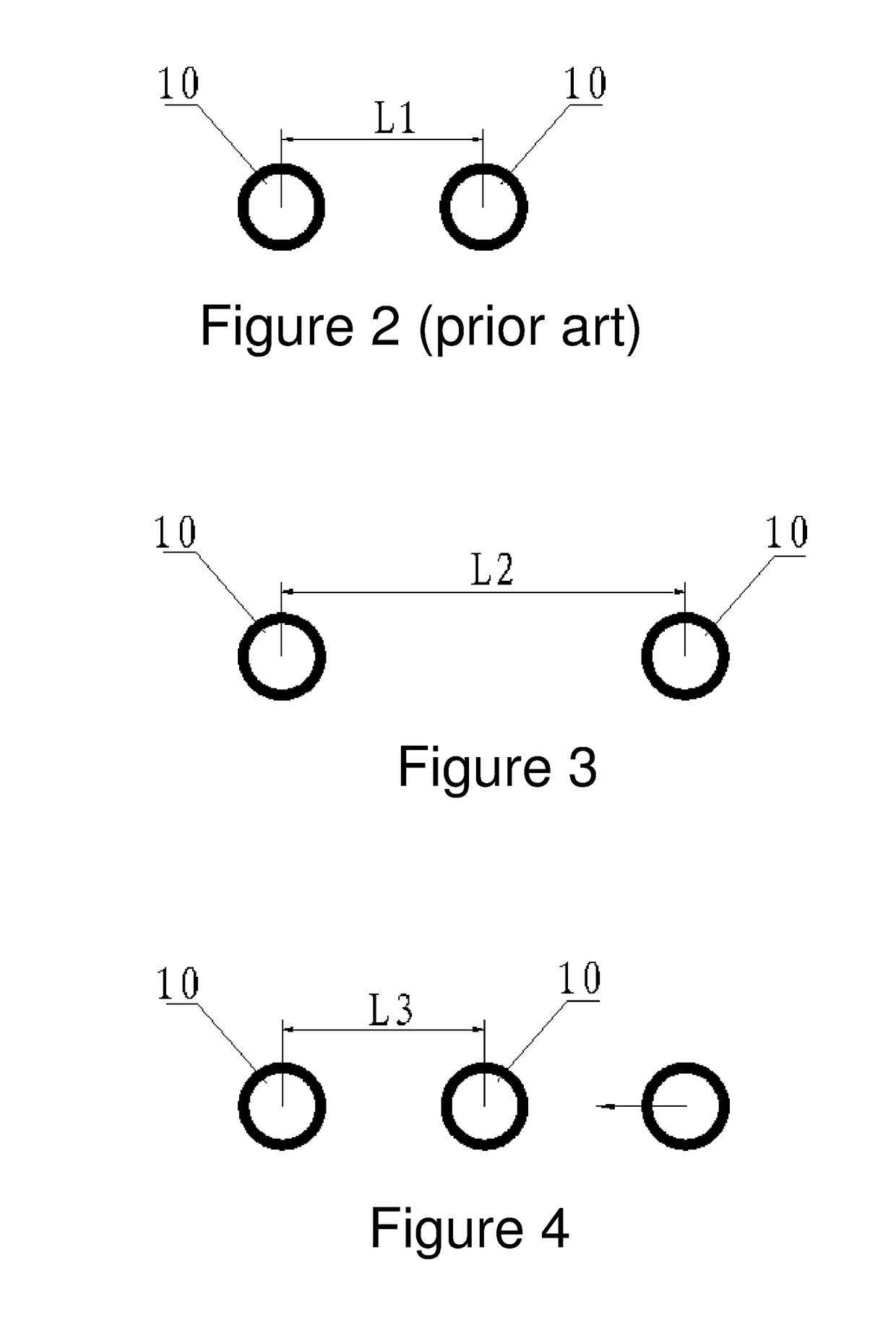Method for realizing variable compression ratio and variable air-fuel ratio of internal combustion engine
- Summary
- Abstract
- Description
- Claims
- Application Information
AI Technical Summary
Benefits of technology
Problems solved by technology
Method used
Image
Examples
first embodiment
[0059]This embodiment is a four-stroke spark ignition internal combustion engine;
[0060]the cylinder working volume is 400 ml, and the combustion chamber volume V1 is designed as 15 ml;
[0061]the air intake volume V2 of the low power operating condition is 150 ml;
[0062]the compression ratio of the low power operating condition is 10:1;
[0063]the air-fuel ratio of the low power operating condition is 15:1;
[0064]the air intake volume V3 of the high power operating condition is 250 ml;
[0065]the range of variable compression ratio of the high power operating condition is 10:1-26.7:1; and
[0066]the range of variable air-fuel ratio of the high power operating condition is 15:1-32:1;
[0067]In this embodiment, the compression ratio is designed according to the air intake volume V2 of the low power operating condition, and as long as the intake air volume reaches V2, it is considered to reach the designed compression ratio. The air intake volume V2 of the low power operating condition is 150 ml, ...
second embodiment
[0072]This embodiment is a four-stroke spark ignition internal combustion engine;
[0073]the cylinder working volume is 600 ml, and the combustion chamber volume V1 is designed as 15 ml;
[0074]the air intake volume V2 of the low power operating condition is 210 ml;
[0075]the compression ratio of the low power operating condition is 14:1;
[0076]the air-fuel ratio of the low power operating condition is 18:1;
[0077]the air intake volume V3 of the high power operating condition is 360 ml;
[0078]the range of variable compression ratio of the high power operating condition is 14:1-40:1; and
[0079]the range of variable air-fuel ratio of the high power operating condition is 18:1-50:1;
[0080]In this embodiment, the compression ratio is designed according to the air intake volume V2 of the low power operating condition, and as long as the intake air volume reaches V2, it is considered to reach the designed compression ratio. The air intake volume V2 of the low power operating condition is 210 ml, th...
third embodiment
[0085]This embodiment is a four-stroke compression ignition internal combustion engine, in which a throttle is needed to be additionally installed;
[0086]the cylinder working volume is 1,200 ml, and the combustion chamber volume V1 is designed as 25 ml;
[0087]the air intake volume V2 of the low power operating condition is 500 ml;
[0088]the compression ratio of the low power operating condition is 20:1;
[0089]the air-fuel ratio of the low power operating condition is 16:1;
[0090]the air intake volume V3 of the high power operating condition is 700 ml;
[0091]the range of variable compression ratio of the high power operating condition is 20:1-48:1; and
[0092]the range of variable air-fuel ratio of the high power operating condition is 16:1-60:1;
[0093]In this embodiment, the compression ratio is designed according to the air intake volume V2 of the low power operating condition, and as long as the intake air volume reaches V2, it is considered to reach the designed compression ratio. The air...
PUM
 Login to View More
Login to View More Abstract
Description
Claims
Application Information
 Login to View More
Login to View More - R&D
- Intellectual Property
- Life Sciences
- Materials
- Tech Scout
- Unparalleled Data Quality
- Higher Quality Content
- 60% Fewer Hallucinations
Browse by: Latest US Patents, China's latest patents, Technical Efficacy Thesaurus, Application Domain, Technology Topic, Popular Technical Reports.
© 2025 PatSnap. All rights reserved.Legal|Privacy policy|Modern Slavery Act Transparency Statement|Sitemap|About US| Contact US: help@patsnap.com



